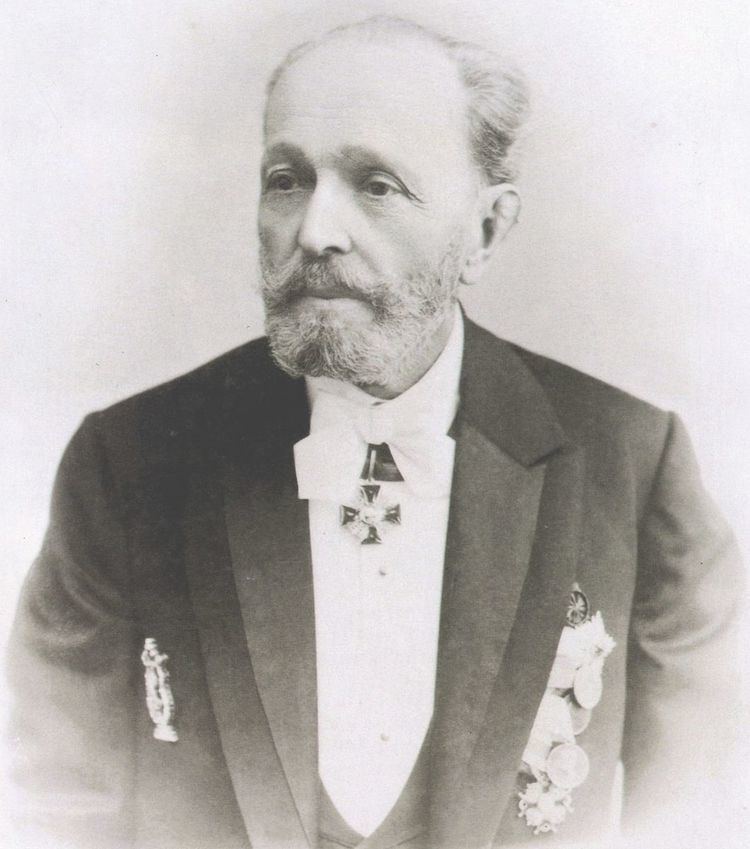 | ||
The Seasons (Russian: Времена года, Vremena goda; also French: Les saisons) is an allegorical ballet in one act, four scenes, by the choreographer Marius Petipa, with music by Alexander Glazunov, his Op. 67. The work was composed in 1899, and was first performed by the Imperial Ballet in 1900 in St. Petersburg, Russia.
Contents
Composition history
The score for Marius Petipa's Les Saisons (The Seasons) was originally intended to have been composed by the Italian composer and conductor Riccardo Drigo, who was Glazunov's colleague and close friend. Since 1886, Drigo held the posts of director of music and Chef d’orchestre to the Ballet of the St. Petersburg Imperial Theatres, while also serving as conductor for performances of the Italian operas in the repertory of the Imperial Opera. Petipa's Les Millions d’Arlequin (a.k.a. Harlequinade) was also in its preliminary stages at the same time as Les Saisons, and was originally intended to have had a score supplied by Glazunov. Since Drigo and Glazunov had an affinity towards each other's assigned ballet, the two composers agreed that Glazunov would compose Les Saisons and that Drigo would compose Les Millions d’Arlequin.
Petipa's Les Millions d'Arlequin was presented for the first time at the Imperial Theatre of the Hermitage on 23 February [O.S. 10 February] 1900. Les Saisons premiered three days later. For both performances the whole of the Imperial court was in attendance.
In 1907, Nikolai Legat staged a revival of Les Saisons at the Imperial Mariinsky Theatre. This production was performed on occasion by the Imperial Ballet after the Russian Revolution, being performed for the last time in 1927.
Les Saisons lived on in an abriged edition in the repertory of Anna Pavlova's touring company.
Performance history
St. Petersburg premiere (World Premiere)
Other notable productions
Publication history
Instrumentation
Woodwinds: 1 piccolo, 2 flutes, 2 oboes (2nd doubling english horn in F), 2 clarinets in B-flat and A, 2 bassoons
Brass: 4 french horns in F, 2 trumpets in B-flat, 3 trombones, tuba
Percussion: timpani, triangle, tambourine, military drum, cymbal, bass drum, glockenspiel
Keyboard: celesta, pianino (upright piano)
Strings: harp, 1st and 2nd violins, violas, cellos, contrabass
Synopsis
Tableau 1 — A winter landscape
Winter is surrounded by his companions: Hoar-frost, Ice, Hail and Snow, who amuse themselves with a band of snowflakes. Two gnomes enter, and soon light a fire that causes all assembled to vanish.
Tableau 2 — A landscape covered with flowers
Spring dances with Zephyr, flower fairies, and enchanted birds. Upon feeling the heat of the sun, the assembly takes flight.
Tableau 3 — A landscape of flowing fields of wheat
Cornflowers and poppies revel in the light and warmth of the sun. They take rest after their exertion. Now Naiads appear, who bring water to refresh the growth, and the Spirit of Corn dances in thanksgiving. Satyrs and Fauns enter playing their pipes, and attempt to carry off the Spirit of the Corn, but she is rescued by the wind of Zephyr.
Tableau 4 — A landscape in Autumn
The Seasons take part in a glorious dance (the well-known "autumn bacchanale") while leaves from autumn trees rain upon their merriment.
Apotheosis — The Sable sky
Constellations of stars sparkle above the earth.
Résumé of dances and the mise-en-scène
List of the numbers comprising The Seasons taken from the Yearbook of the Imperial Theatres, 1899-1900, being the original titles of the dances and mise en scène as originally staged.
Tableau I — L’Hiver (winter)
Tableau II — Le Printemps (spring)
Tableau III — L’Été (summer)
Tableau IV — L’Automne (fall)
Apotheosis
